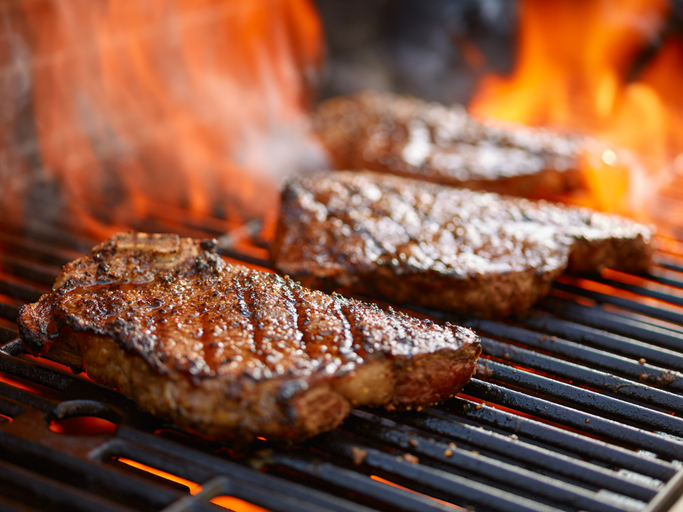The summer grilling season has begun! We know how excited you are to fire up the grill, make those burgers and throw on the steaks. We also know how totally and completely bummed you are when you realize your propane is on empty – and so is the spare tank in the garage.
Instead of dealing with the frequent hassle of running out of propane, changing and filling the tank, Maertin Heating and Cooling recommends looking into a natural gas grill instead. Beyond comfortable outdoor furniture and eye-catching landscaping, adding the reliability of the natural gas you use in your kitchen upgrades your summer experience – not to mention your home.
Along with eliminating the dreaded dry tank mid-barbecue, natural gas grills burn cleaner and are considered one of the most environmentally friendly grilling options. However, the process of using natural gas for your backyard barbecue does require some planning.
First, the natural gas that runs into your home will need to be run out to your grilling location. Check with your local ordinances and codes, but generally your grill should be at least 10 feet away from structures and other combustible materials. If you already have a gas hook-up on the exterior of your home, many natural gas grills come with a 10’ connecting hose to make this simple. If you don’t have a hook-up or if 10 feet of hose doesn’t get your grill within code, you might need to hire professionals to run a new line to your grilling location.
It is a safe, great idea to hire a professional even if the gas line and grill location meet codes. Installation involves pipes and walls and trenches – and even if it didn’t require all that, it would still involve a deadly and combustible gas. Professionals can ensure the safety of your home and make sure all the correct shut-offs and seals are installed. An external emergency shut-off is a must.
If you are a capable, expert DIYer, you can convert a propane grill into a natural gas grill. Contact your grill’s manufacturer to about conversion kits. Propane and natural gas have different densities and so the ductwork that feeds the gas into the grill box needs to be changed.
The biggest complaint about having a natural gas backyard grill is that your backyard cookout is tethered to the natural gas hook-up. If you’re used to moving your grill around, natural gas is probably not for you. But when your backyard is an extension of your home, then it makes sense that the grill—like the kitchen stove—would stay in one spot. This also allows you to pick the safest spot for your grill. Choose a stable, even location, like a concrete pad or blocks. Keep the grill away from other combustibles and consider any trees or hedges that might grow over or into the cooking area. Because your backyard grill is exposed to the elements, you’ll need to regularly check the hoses and seals on your grill. Stay alert for the smell or sound of leaks. You can pour soapy water over the seals and hose; if you see bubbles, you have a leak and need to replace the seals and hose.
If the initial installation sounds like a hassle, remember – you’ll never run out of cooking fuel again. Your grill will be as ready to fire up as the oven in your kitchen.
If you have questions about the safety of natural gas, send a message to Maertin Heating and Cooling. We’ll be happy to help!




